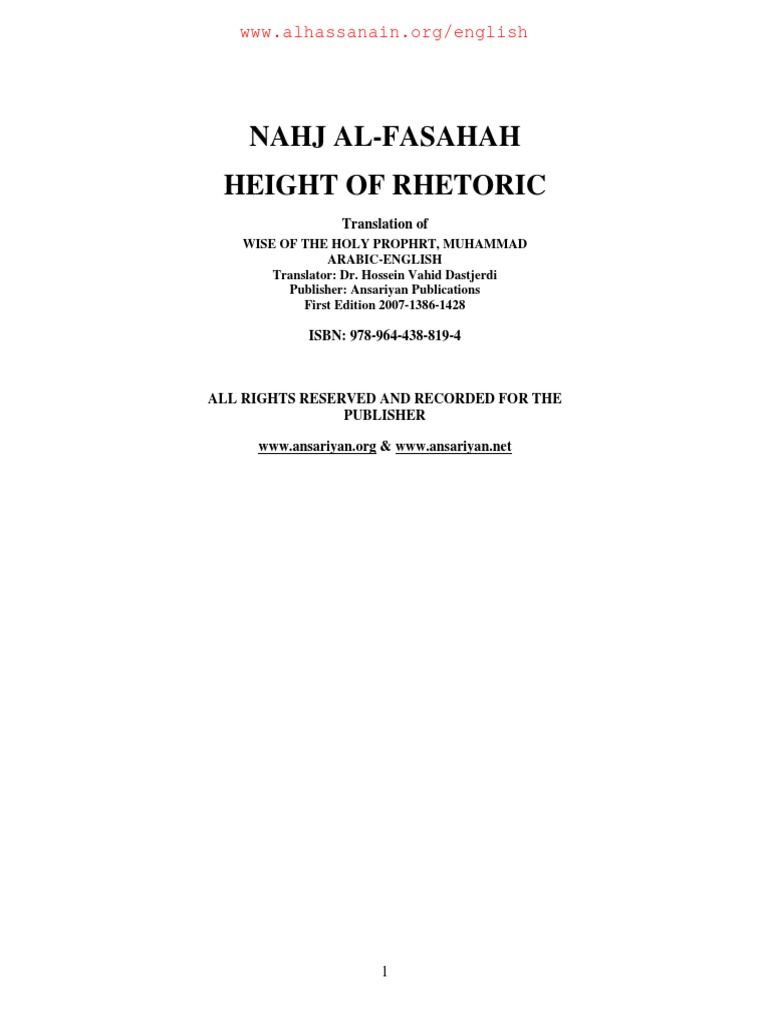Shia teachings are replete with profound texts that illuminate spiritual, ethical, and theological dimensions inherent in Islamic tradition. Among these seminal works is the “Nahj al-Fasahah,” a text that embodies the height of eloquence and profundity within Islamic literature. This text is not merely a compilation of aphorisms but a nexus of wisdom that offers intricate insights into human existence, morality, and the divine. The intrigue surrounding Nahj al-Fasahah can often be attributed to its layered meanings, lyrical beauty, and the gravitas of its teachings. This article delves into the multifaceted dimensions of this work, addressing a common observation of its allure and hinting at deeper reasons for its enduring relevance.
At its core, Nahj al-Fasahah serves as an enriching anthology of sayings attributed to the Prophet Muhammad and the Imams, especially Imam Ali ibn Abi Talib, the first Imam revered in Shia Islam. It is inextricably linked to the concept of eloquence—a pivotal aspect not just of language, but of the very conveyance of truth. The title itself, meaning “The Peak of Eloquence,” is a testament to the linguistic artistry employed within its pages, capturing the complexities of human emotion and divine instruction. This comprehensive collection addresses various themes that resonate deeply with the human condition, creating a tapestry of wisdom that transcends time.
The text’s eloquent expressions of justice, equity, and compassion reflect the ethical paradigm espoused in Shia teachings. Commonly observed are the universal principles of justice that resonate through Imam Ali’s words, emphasizing the necessity for balance in societal structures. For instance, Nahj al-Fasahah elucidates the intrinsic connection between justice and the well-being of the community. Such statements not only reflect the socio-political ethos of Imam Ali’s era but resonate with contemporary issues, showcasing the timelessness of its messages. This enduring relevance is frequently noted by scholars and adherents alike, representing a bridge between the past and present.
A significant trait of this work is its capacity to provoke introspection. Many readers find themselves captivated by the succinct yet profound nature of the declarations. The aphoristic style challenges individuals to contemplate the deeper implications of each saying, engendering a more thoughtful engagement with the text. Such engagement is indicative of its transformative potential. The evocative language and rhetorical flourishes compel the reader to delve into personal reflections, inspiring spiritual growth and moral development.
Tags
Share this on:
[addtoany]


